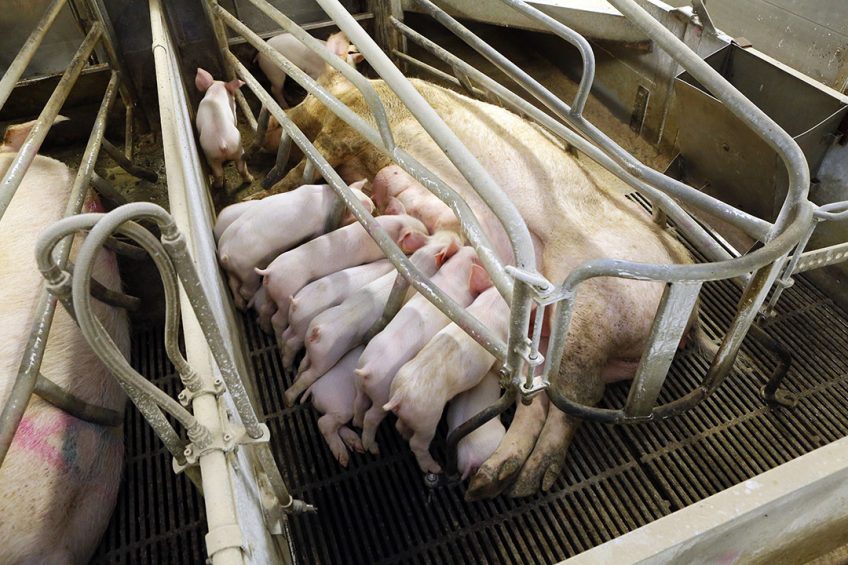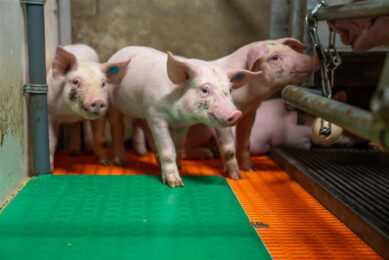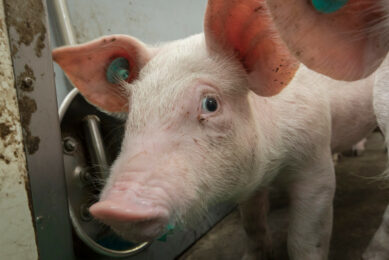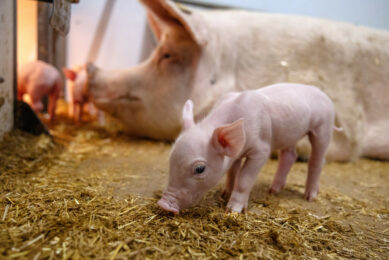Weaning piglets – is the glass half full or half empty?

How many piglets can be weaned per litter? Much of that depends on genetics and management techniques used. A recent Danish survey clearly demonstrates the nursing capacity potential of sows, writes Danish pig housing and welfare expert Vivi Aarestrup Moustsen.
Is there a quick and easy solution to handle large litters? Probably not, because like in most matters, success requires engagement, determination and willingness to see opportunities and half full glasses, to continue to work to improve the welfare and the production. That, instead of limitations and half empty glasses.
Many herds have similar numbers born alive per litter, but they don’t necessarily wean the same number per litter – or per weaning. At the Danish SEGES Pig Research Centre, we have counted and scored glands and teats of more than 400 Danish crossbred sows from 10 different herds. More than 50% of the sows had at least 14 functional teats and 10% had at least 16 functional teats. The number of ‘born alive’ averaged 16.9 piglets per litter in 2017, and number of ‘weaned/litter’ averaged 14.6. That figure, however, includes piglets weaned by nurse sows.
It is therefore essential to point out the difference between the total amount of piglets weaned per litter and the amount of piglets she has nursed herself. The first group is the number of piglets weaned per litter, the 2nd is called the number of piglets per weaning.
When the sows themselves nurse more of their own piglets, fewer piglets need to be moved to nurse sows, so there will be less mixing of piglets.
Herds with high numbers weaned
Recently, we asked for herds with a high numbers weaned to contact us. We received data from 8 herds which had average numbers of sows between 443 to 1,358 over the last 52 weeks.
Find more intriguing thoughts at our special Expert Opinion section
Across the herds, the sows on average gave birth to 17-19 piglets born alive per litter, weaned 15-17 per litter, and reached an average of 12.6-14.4 per weaning. All 8 herds had a high productivity, and yet they also differed.
In one herd, sows reached an average of 16.5 piglets weaned per litter and reached an average of 14.4 piglets per weaning. In total, 20% of the sows there weaned 16 or more piglets per weaning and another 29% weaned 15 piglets per weaning. An average of 20% of the sows in every weekly batch over 52 weeks had weaned 16 or more piglets. Figure 1 illustrates for 52 weeks the proportion of sows weaning 16 or more, 15, 14 or 13 or fewer piglets per weaning for the 8 Danish herds.
Figure 1 – Proportion of sows weaning 16 or more, 15, 14 or 13 or less piglets per weaning for 8 Danish herds.

Potential to improve the nursing capacity
The survey illustrates the potential to improve the nursing capacity of sows and thereby reduce movements and mixing of piglets. However, it takes management and good conditions for the sows. And most likely an adjustment period both for sows but nonetheless for caretakers to let sows do what they do well – look after their piglets.
We’ll continue our work to understand characteristics of sows nursing more piglets and management routines to ensure welfare and productivity go hand in hand.











